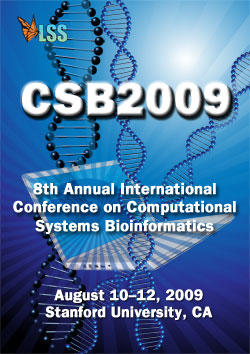Conditional pathway integration
Alexandra Skolozub, Ofer Sarig, Ron Y. Pinter*
Department of Computer Science, Israel Institute of Technology, Haifa 32000, Israel. pinter@cs.technion.ac.il
Proc LSS Comput Syst Bioinform Conf. August, 2009. Vol. 8, p. 165-176. Full-Text PDF
*To whom correspondence should be addressed.

Many biological pathways that describe complex cellular processes are available in public and commercial databases as well as in the literature. However, each item focuses on a particular cellular function. Moreover, pathways differ in the way they are described in different sources, emphasizing complementary aspects of the biological system under study. Considering related pathways in a unified framework is essential for understanding their behavior and for elucidating and refining open issues involving such systems. To address these challenges we have developed a conditional pathway algebra, in which pathways are enriched with both new node types as well as additional edge types providing significantly more expressive power for the description of existing biological phenomena. During conditional pathway integration, some interactions are made dependent upon a specific predicate (the presence/absence of a protein, extracellular factors, etc.). Moreover, such integration enables distinguishing between different data sources and points out problematic interactions in the given pathways. We provide a formal definition of the algebra and prove some properties of its operations, such as closure, commutativity, and the lack of associativity. Some of these operations are essential when applied to several pathways to form an entire (sub)system. Our algebra is embodied in the Pathway Integration Environment (PIE) as a plugin for Cytoscape. To demonstrate the utility and effectiveness of our method, we have applied it to three well characterized yeast signaling pathways: (i) Pheromone response, (ii) Filamentous growth, and (iii) High osmolarity glycerol pathways. Most of our computational observations are confirmed in the literature.
[ CSB2009 Conference Home Page ] .... [ CSB2009 Online Proceedings ] .... [ Life Sciences Society Home Page ]